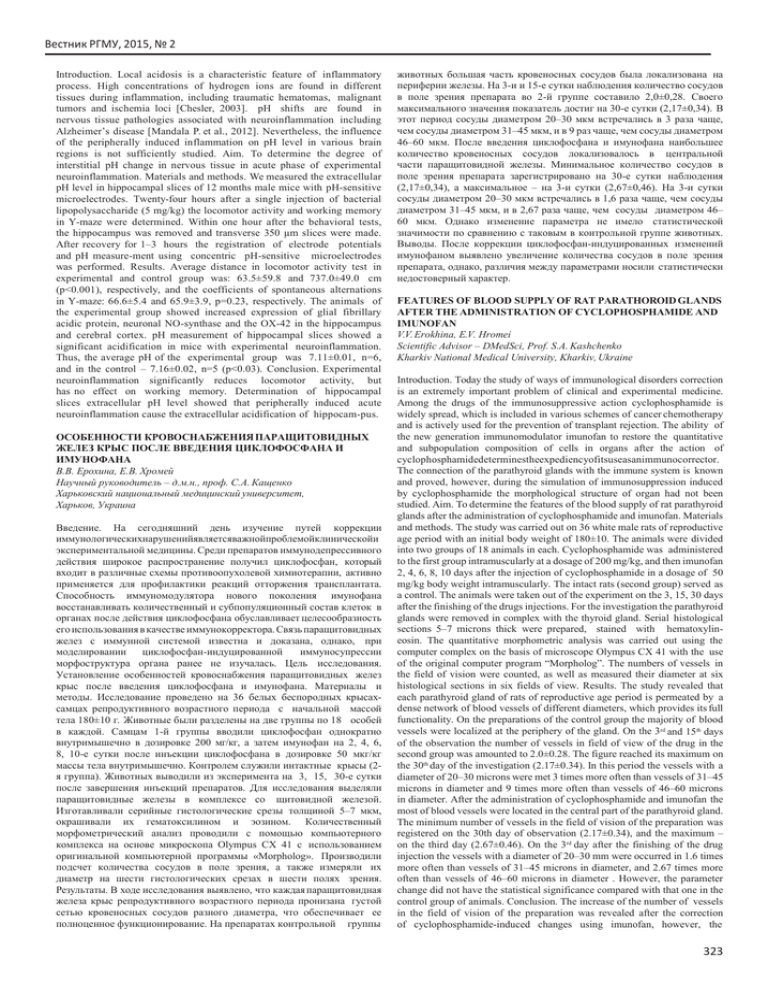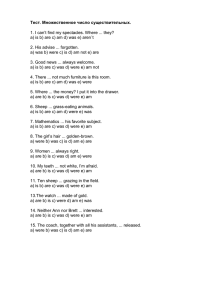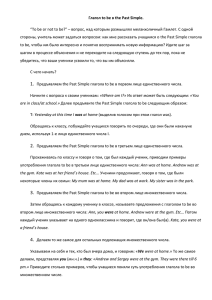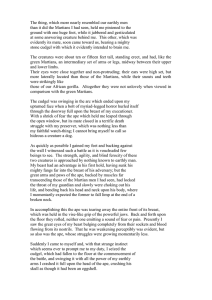Ерохина В.В. Особенности кровоснабжения паращитовидных
advertisement

Вестник РГМУ, 2015, № 2 Introduction. Local acidosis is a characteristic feature of inflammatory process. High concentrations of hydrogen ions are found in different tissues during inflammation, including traumatic hematomas, malignant tumors and ischemia loci [Chesler, 2003]. pH shifts are found in nervous tissue pathologies associated with neuroinflammation including Alzheimer’s disease [Mandala P. et al., 2012]. Nevertheless, the influence of the peripherally induced inflammation on pH level in various brain regions is not sufficiently studied. Aim. To determine the degree of interstitial pH change in nervous tissue in acute phase of experimental neuroinflammation. Materials and methods. We measured the extracellular pH level in hippocampal slices of 12 months male mice with pH-sensitive microelectrodes. Twenty-four hours after a single injection of bacterial lipopolysaccharide (5 mg/kg) the locomotor activity and working memory in Y-maze were determined. Within one hour after the behavioral tests, the hippocampus was removed and transverse 350 µm slices were made. After recovery for 1–3 hours the registration of electrode potentials and pH measure-ment using concentric pH-sensitive microelectrodes was performed. Results. Average distance in locomotor activity test in experimental and control group was: 63.5±59.8 and 737.0±49.0 cm (p<0.001), respectively, and the coefficients of spontaneous alternations in Y-maze: 66.6±5.4 and 65.9±3.9, p=0.23, respectively. The animals of the experimental group showed increased expression of glial fibrillary acidic protein, neuronal NO-synthase and the OX-42 in the hippocampus and cerebral cortex. pH measurement of hippocampal slices showed a significant acidification in mice with experimental neuroinflammation. Thus, the average pH of the experimental group was 7.11±0.01, n=6, and in the control – 7.16±0.02, n=5 (p<0.03). Conclusion. Experimental neuroinflammation significantly reduces locomotor activity, but has no effect on working memory. Determination of hippocampal slices extracellular pH level showed that peripherally induced acute neuroinflammation cause the extracellular acidification of hippocam-pus. ОСОБЕННОСТИ КРОВОСНАБЖЕНИЯ ПАРАЩИТОВИДНЫХ ЖЕЛЕЗ КРЫС ПОСЛЕ ВВЕДЕНИЯ ЦИКЛОФОСФАНА И ИМУНОФАНА В.В. Ерохина, Е.В. Хромей Научный руководитель – д.м.н., проф. С.А. Кащенко Харьковский национальный медицинский университет, Харьков, Украина Введение. На сегодняшний день изучение путей коррекции иммунологическихнарушенийявляетсяважнойпроблемойклиническойи экспериментальной медицины. Среди препаратов иммунодепрессивного действия широкое распространение получил циклофосфан, который входит в различные схемы противоопухолевой химиотерапии, активно применяется для профилактики реакций отторжения трансплантата. Способность иммуномодулятора нового поколения имунофана восстанавливать количественный и субпопуляционный состав клеток в органах после действия циклофосфана обуславливает целесообразность его использования в качестве иммунокорректора. Связь паращитовидных желез с иммунной системой известна и доказана, однако, при моделировании циклофосфан-индуцированной иммуносупрессии морфоструктура органа ранее не изучалась. Цель исследования. Установление особенностей кровоснабжения паращитовидных желез крыс после введения циклофосфана и имунофана. Материалы и методы. Исследование проведено на 36 белых беспородных крысахсамцах репродуктивного возрастного периода с начальной массой тела 180±10 г. Животные были разделены на две группы по 18 особей в каждой. Самцам 1-й группы вводили циклофосфан однократно внутримышечно в дозировке 200 мг/кг, а затем имунофан на 2, 4, 6, 8, 10-е сутки после инъекции циклофосфана в дозировке 50 мкг/кг массы тела внутримышечно. Контролем служили интактные крысы (2я группа). Животных выводили из эксперимента на 3, 15, 30-е сутки после завершения инъекций препаратов. Для исследования выделяли паращитовидные железы в комплексе со щитовидной железой. Изготавливали серийные гистологические срезы толщиной 5–7 мкм, окрашивали их гематоксилином и эозином. Количественный морфометрический анализ проводили с помощью компьютерного комплекса на основе микроскопа Olympus CX 41 с использованием оригинальной компьютерной программы «Morpholog». Производили подсчет количества сосудов в поле зрения, а также измеряли их диаметр на шести гистологических срезах в шести полях зрения. Результаты. В ходе исследования выявлено, что каждая паращитовидная железа крыс репродуктивного возрастного периода пронизана густой сетью кровеносных сосудов разного диаметра, что обеспечивает ее полноценное функционирование. На препаратах контрольной группы животных большая часть кровеносных сосудов была локализована на периферии железы. На 3-и и 15-е сутки наблюдения количество сосудов в поле зрения препарата во 2-й группе составило 2,0±0,28. Своего максимального значения показатель достиг на 30-е сутки (2,17±0,34). В этот период сосуды диаметром 20–30 мкм встречались в 3 раза чаще, чем сосуды диаметром 31–45 мкм, и в 9 раз чаще, чем сосуды диаметром 46–60 мкм. После введения циклофосфана и имунофана наибольшее количество кровеносных сосудов локализовалось в центральной части паращитовидной железы. Минимальное количество сосудов в поле зрения препарата зарегистрировано на 30-е сутки наблюдения (2,17±0,34), а максимальное – на 3-и сутки (2,67±0,46). На 3-и сутки сосуды диаметром 20–30 мкм встречались в 1,6 раза чаще, чем сосуды диаметром 31–45 мкм, и в 2,67 раза чаще, чем сосуды диаметром 46– 60 мкм. Однако изменение параметра не имело статистической значимости по сравнению с таковым в контрольной группе животных. Выводы. После коррекции циклофосфан-индуцированных изменений имунофаном выявлено увеличение количества сосудов в поле зрения препарата, однако, различия между параметрами носили статистически недостоверный характер. FEATURES OF BLOOD SUPPLY OF RAT PARATHOROID GLANDS AFTER THE ADMINISTRATION OF CYCLOPHOSPHAMIDE AND IMUNOFAN V.V. Erokhina, E.V. Hromei Scientific Advisor – DMedSci, Prof. S.A. Kashchenko Kharkiv National Medical University, Kharkiv, Ukraine Introduction. Today the study of ways of immunological disorders correction is an extremely important problem of clinical and experimental medicine. Among the drugs of the immunosuppressive action cyclophosphamide is widely spread, which is included in various schemes of cancer chemotherapy and is actively used for the prevention of transplant rejection. The ability of the new generation immunomodulator imunofan to restore the quantitative and subpopulation composition of cells in organs after the action of cyclophosphamidedeterminestheexpediencyofitsuseasanimmunocorrector. The connection of the parathyroid glands with the immune system is known and proved, however, during the simulation of immunosuppression induced by cyclophosphamide the morphological structure of organ had not been studied. Aim. To determine the features of the blood supply of rat parathyroid glands after the administration of cyclophosphamide and imunofan. Materials and methods. The study was carried out on 36 white male rats of reproductive age period with an initial body weight of 180±10. The animals were divided into two groups of 18 animals in each. Cyclophosphamide was administered to the first group intramuscularly at a dosage of 200 mg/kg, and then imunofan 2, 4, 6, 8, 10 days after the injection of cyclophosphamide in a dosage of 50 mg/kg body weight intramuscularly. The intact rats (second group) served as a control. The animals were taken out of the experiment on the 3, 15, 30 days after the finishing of the drugs injections. For the investigation the parathyroid glands were removed in complex with the thyroid gland. Serial histological sections 5–7 microns thick were prepared, stained with hematoxylineosin. The quantitative morphometric analysis was carried out using the computer complex on the basis of microscope Olympus CX 41 with the use of the original computer program “Morpholog”. The numbers of vessels in the field of vision were counted, as well as measured their diameter at six histological sections in six fields of view. Results. The study revealed that each parathyroid gland of rats of reproductive age period is permeated by a dense network of blood vessels of different diameters, which provides its full functionality. On the preparations of the control group the majority of blood vessels were localized at the periphery of the gland. On the 3rd and 15th days of the observation the number of vessels in field of view of the drug in the second group was amounted to 2.0±0.28. The figure reached its maximum on the 30th day of the investigation (2.17±0.34). In this period the vessels with a diameter of 20–30 microns were met 3 times more often than vessels of 31–45 microns in diameter and 9 times more often than vessels of 46–60 microns in diameter. After the administration of cyclophosphamide and imunofan the most of blood vessels were located in the central part of the parathyroid gland. The minimum number of vessels in the field of vision of the preparation was registered on the 30th day of observation (2.17±0.34), and the maximum – on the third day (2.67±0.46). On the 3rd day after the finishing of the drug injection the vessels with a diameter of 20–30 mm were occurred in 1.6 times more often than vessels of 31–45 microns in diameter, and 2.67 times more often than vessels of 46–60 microns in diameter . However, the parameter change did not have the statistical significance compared with that one in the control group of animals. Conclusion. The increase of the number of vessels in the field of vision of the preparation was revealed after the correction of cyclophosphamide-induced changes using imunofan, however, the 323


